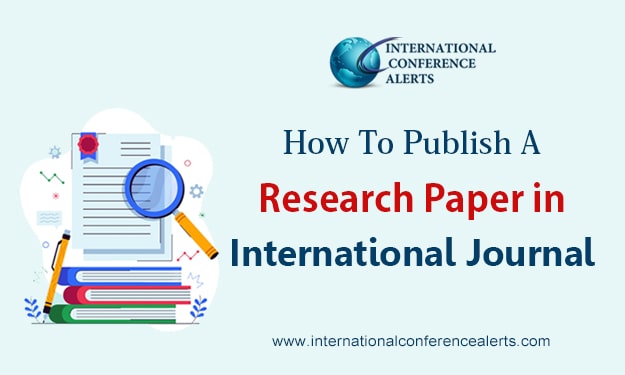Publishing a research paper can be highly rewarding for your career, academic or professional. Your published research paper makes your work more discoverable and gives your work visibility among peers in your field.
As a result, you gain recognition and credibility in your field as your paper serves as a testament to your knowledge and expertise. You may even get grants based on your research paper so that you can proceed with the work further.
However, you have to ensure that your research paper is accepted and published in the fast-track publication journal. So, we have created this step-by-step guide to publishing a research paper. It covers everything from choosing the right journal to navigating the peer review process and promoting your work.
Step 1: Select the Journal
Choosing a journal to publish your research paper is one of the most important steps in the process. It can make a huge difference to the reach and impact your work makes. So, make sure you spend enough time researching the journal and understanding each aspect of the submission.
Two key factors to keep in mind when selecting a journal are the journal’s scope and reputation. Does your research paper fit the scope of the journal? Next, the reputation can be based on various factors such as:
- professionalism of the editorial team
- journal’s audience and research
- turnaround times, to name a few
Make sure the journal or publisher you choose has high standards of publication ethics and peer review.
Some important tips to follow when choosing a journal:
- Your research paper should fit the journal’s scope.
- Visit their website to find the checklist (good journals provide this) to assess the credentials of the journal you are considering.
- Assess the quality of their website. Do they have a well-designed, professional-looking website?
- Check what services and tools they offer to researchers or authors.
- Follow the instructions/checklist carefully.
- Check editorial policies.
Important note: You should select the Scopus indexed journal even before you start writing your research paper. So, you can tailor your work to the journal’s scope, style, and specifications. This improves your chances of acceptance.
Step 2: Write Your Research Paper
Writing a good research paper is vital to get it accepted and published. In the selected journal, you may use previously published papers for inspiration to base your paper on. Published papers in the journal give a better idea of the specifications and guidelines of the platform. In addition, the style, structure, and content of your research paper must resonate with the journal’s audience.
Here is a brief of the process of writing your research paper:
Conduct preliminary research: Find a topic you can focus on. The topic must be of interest to you and the industry. Use a variety of reliable sources, such as relevant books, journals, and reliable websites, to ensure you do not miss anything important.
Create a thesis statement: A thesis statement refers to the statement of your central argument. It defines the purpose of your paper. Keep it concise, contentious, and coherent. You may need to revise and refine the thesis statement as your research progresses.
Create an outline: A research paper outline is a list of key topics, evidence, and arguments you want to focus on. Divide the list into sections with headings to know roughly what the paper will look like.
Write the paper: You may need to write multiple drafts of your research paper. It is good to create a final checklist and run your paper through it to be sure that it meets all the criteria of a good research paper.
Step 3: Check Whether Your Paper is Publish-Ready
But before that, you have to ensure that your paper is ready for submission. So, answer these questions:
- Does your paper hold academic value?
- Is the paper well-written?
- Are you able to develop the argument properly?
- Does your paper address a unique and interesting topic?
- Does the paper focus on the latest work in the field?
- Have you verified the findings?
- Are the findings comprehensive?
- Are you able to propose or provide a solution to any problems in the field?
- Does the paper meet the specifications and guidelines established by the selected journal?
If you say ‘yes’ to all these questions, it means your research paper is ready for submission.
Step 4: Submit Your Research Paper
Once you have written your research paper, it is time to prepare your manuscript for submission. Note that writing the paper and preparing the manuscript are two different tasks. To publish your research manuscript, it must meet publishing standards as outlined by the journal. Therefore, you must carefully check specific submission requirements and publishing standards because missing even a single thing can reflect your lack of attention.
Typically, the submission process involves writing an impressive cover letter, navigating the submission system as set by the journal, and ensuring the preparedness of your research data. Some of the most important requirements for research paper submission are:
- The manuscript should meet the style guidelines for authors.
- Structure and technical inputs such as graphs, charts and figures should comply with the journal’s specific requirements.
- Cite authors’ work properly to avoid plagiarism or copyright issues.
Step 5: The Peer Review Process
The peer review process involves subjecting an author’s scholarly work to the scrutiny of other experts in the same field. Peer review encourages authors to meet all the accepted standards of their discipline and regulate the dissemination of research data. This helps ensure that no unacceptable claims/interpretations or personal views are not published without prior expert review.
Being a researcher, you should take peer review as a positive step in the process of publishing a research paper. It helps improve your paper before it is published. Authors get constructive feedback and peer support in this collaborative process, thus advancing their work.
All research papers undergo peer review, although some journals may go through post-publication peer review, which means that reviews and comments are made after the paper is published. It helps to understand the peer review process in advance so that you can pay attention to key things considered by peers.
Step 6: Production & Promotion
The accepted paper heads into the production stage. Your research paper is prepared for publishing in the selected journal in this phase. This involves producing the final version of the paper by the journal production team. Expect to be invited at various stages for your input.
Next, it is time to share your published research paper with the global audience. You can promote your paper via LinkedIn, X (formerly Twitter), email, etc. Social media can drive traffic to your published paper faster. It’s because almost everyone uses social media channels like LinkedIn and Instagram. Just make sure you use proper and highly relevant hashtags to ensure your paper appears in searches for your work.
However, industrial events and conferences serve as a great platform to showcase your work to peers and leaders in your field. At these events, you can network with other experts in the field, exchange ideas with peers and get valuable feedback.
So, do not miss any opportunity to attend a conference. Sign up with International Conference Alerts for upcoming conferences worldwide.

